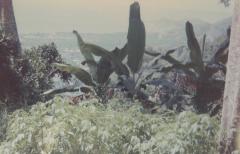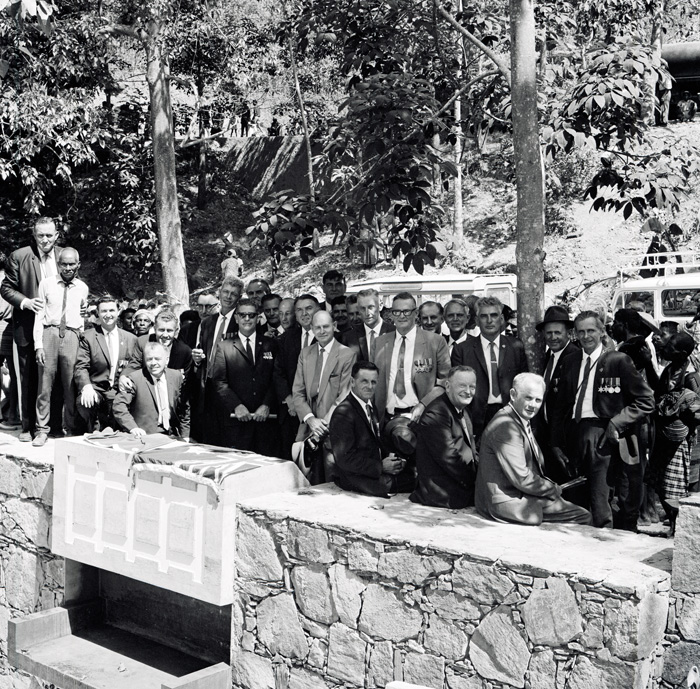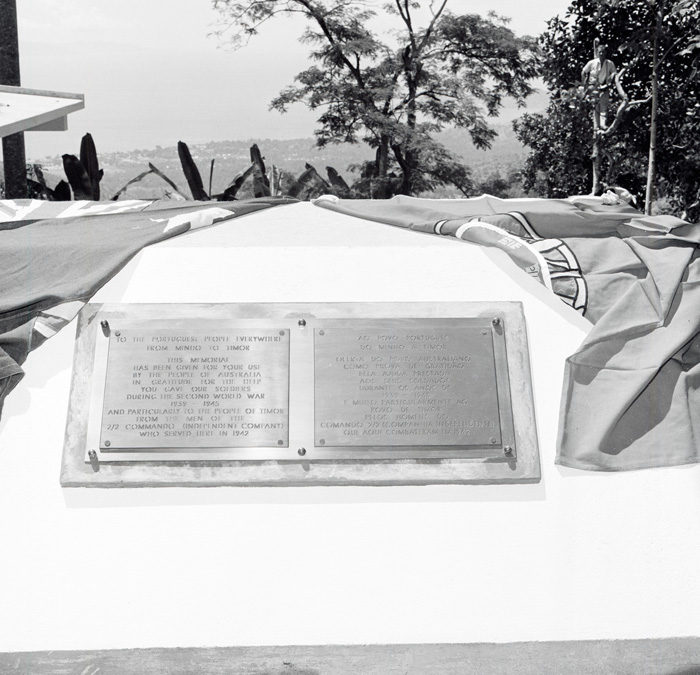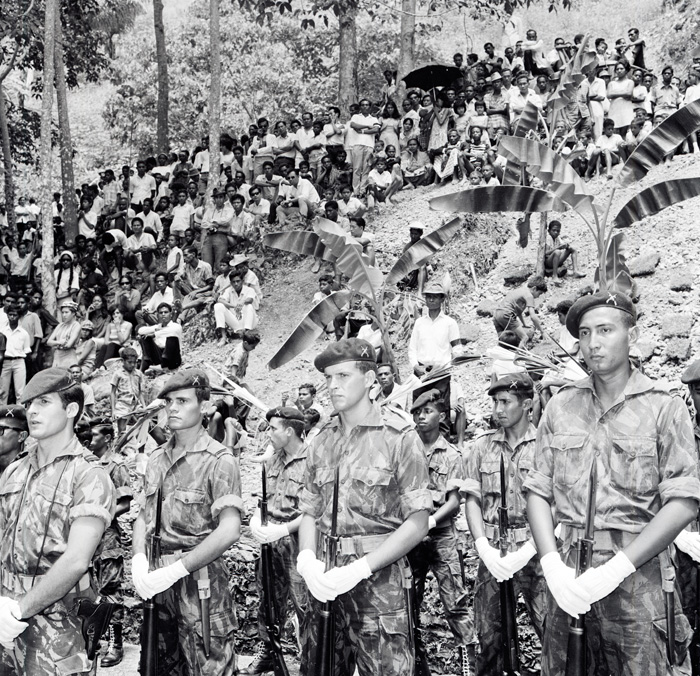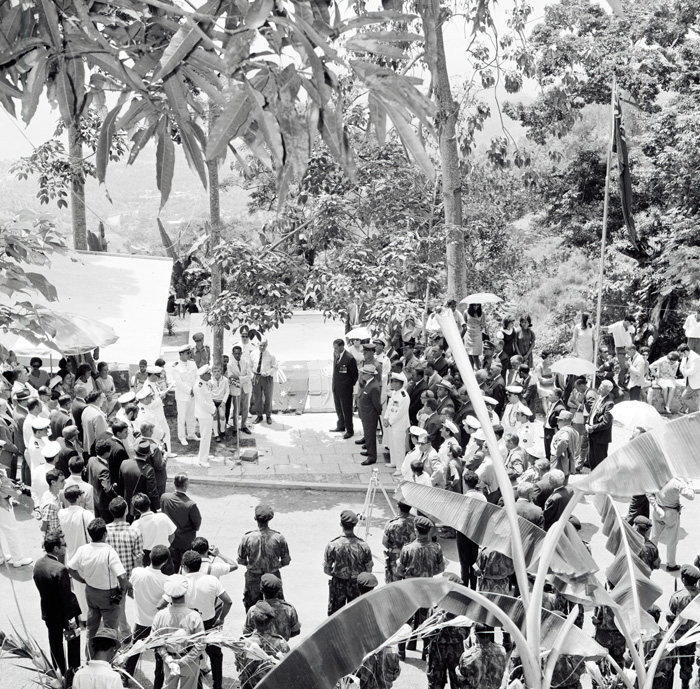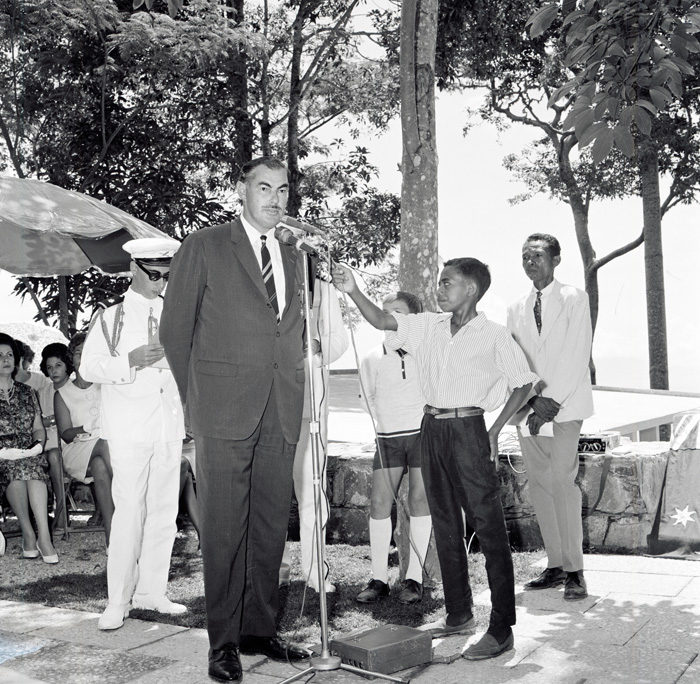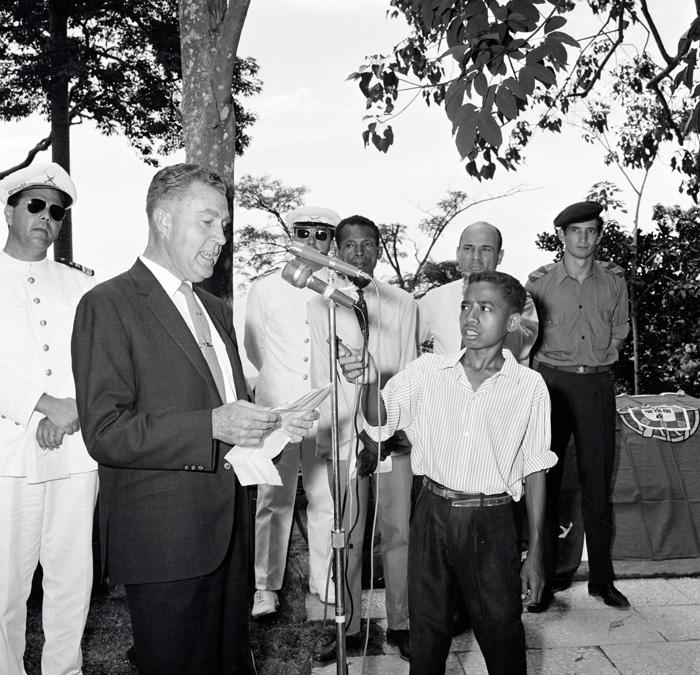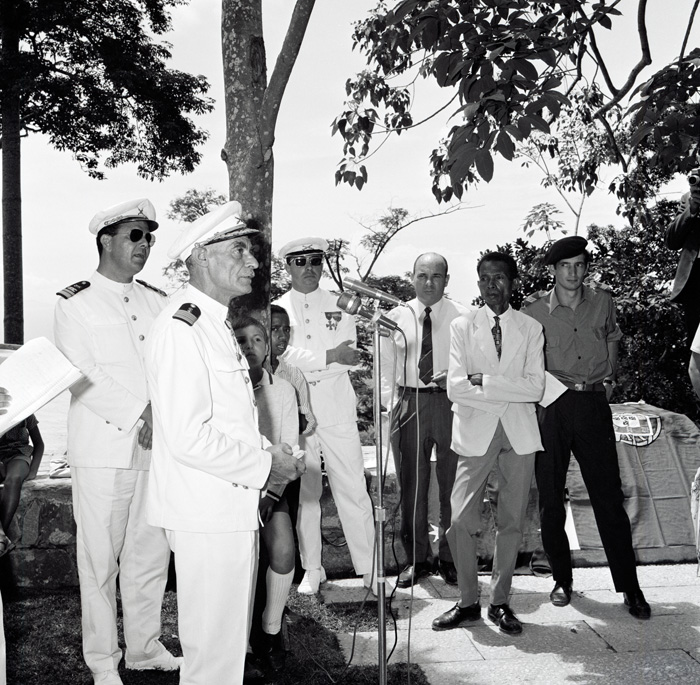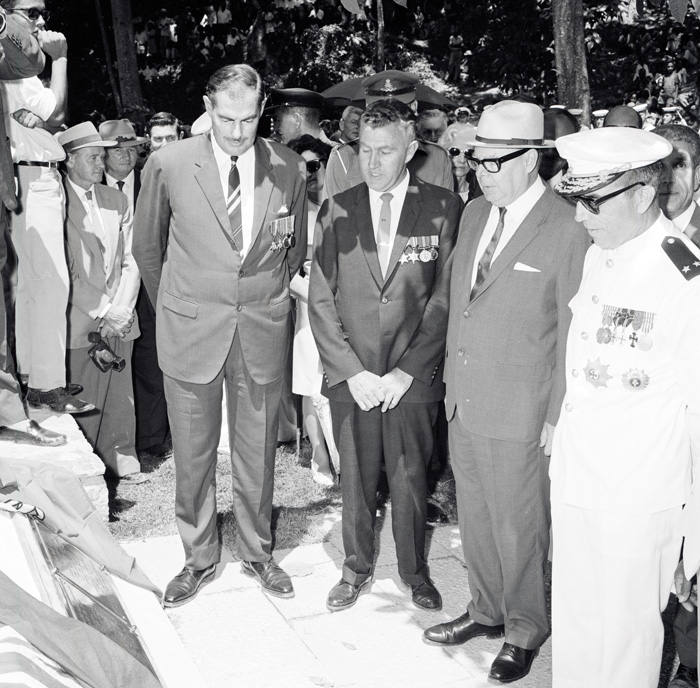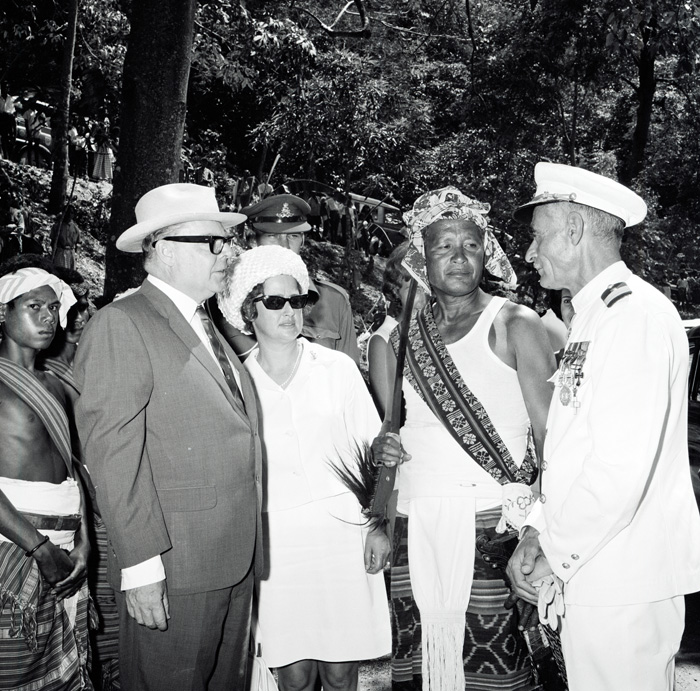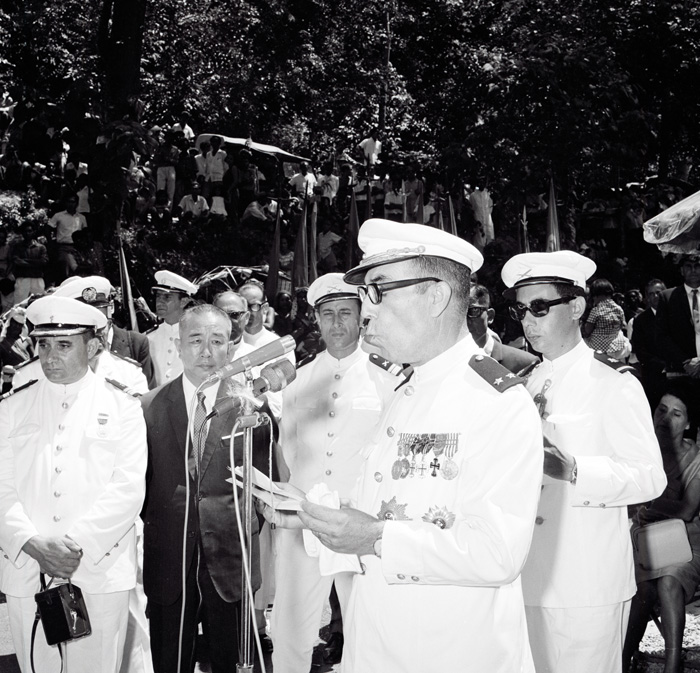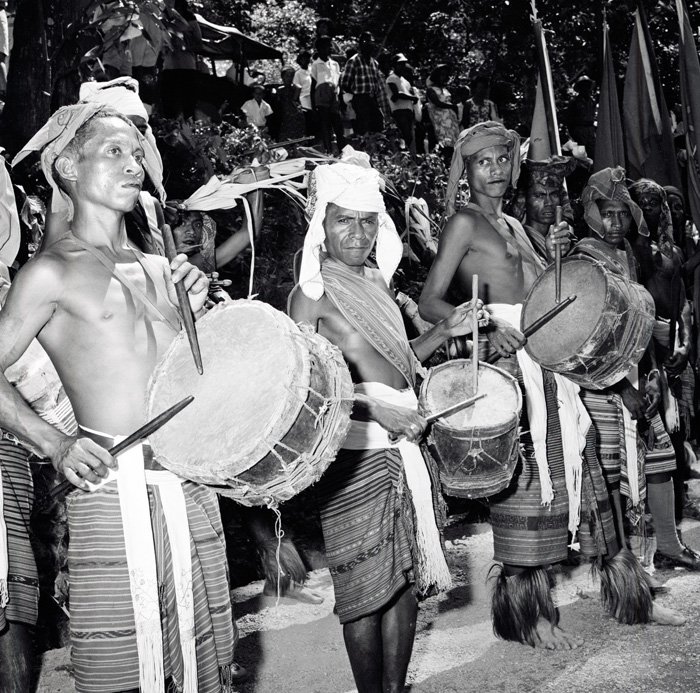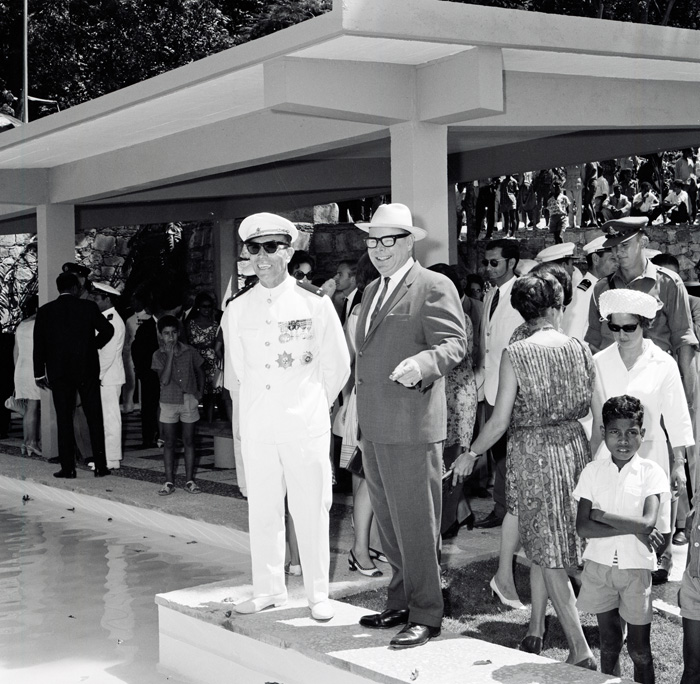-
Posts
618 -
Joined
-
Last visited
Content Type
News
Video & Audio
Men of the 2/2
Forums
Store
Gallery
Everything posted by Edward Willis
-
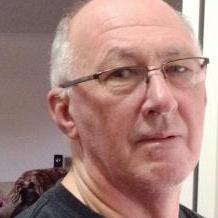
Timor-Leste and Australia Achieve Breakthrough in Maritime Boundary Conciliation Proceedings
Edward Willis commented on Edward Willis's news post in News
Latest developments in negotiations: http://www.sbs.com.au/news/article/2017/10/15/australia-timor-leste-draw-maritime-borders-draft-treaty-bring-end-oil-and-gas -
75 YEARS ON 2/40 – THE ‘DOOMED BATTALION’ – MEN FROM THE 2/40 WHO FOUGHT ON WITH THE DOUBLEREDS IN PORTUGUESE TIMOR As recounted in an earlier post ‘SPARROW FORCE DEPARTS FROM DARWIN FOR KOEPANG, DUTCH TIMOR – 10 DECEMBER 1941’, the No. 2 Independent Company accompanied the 2/40 Battalion on this voyage. 2/40 Battalion colour patch The two units parted company in mid-December 1941 when the No. 2 Independent Company was despatched to occupy Dili in Portuguese Timor (see post ‘THE AUSTRALIAN AND DUTCH LANDINGS AT DILI - 17-20 DECEMBER 1941’). Fate of the 2/40 Battalion The men of the No. 2 Independent Company were re-united with some of their 2/40 compatriots and men from other Sparrow Force units a few months later when they made their way from Dutch Timor to Portuguese Timor following the surrender of the rest of the Battalion contingent to the Japanese on 23 February 1942 after a heroic defensive battle against the invaders. With an authorised strength of around 900 personnel, mostly drawn from the state of Tasmania. The men who were taken as prisoners in Dutch Timor spent the rest of the war in captivity in camps throughout Southeast Asia including Java, Burma, Thailand, Japan, Singapore and Sumatra and did not return to Australia until September 1945. The battalion had 271 men killed in action or died while prisoners of war, while a further 79 were wounded. Peter Henning, the historian of the 2/40, coined the term ‘doomed battalion’ to encapsulate the overwhelming difficulties the unit faced in attempting to effectively defend Dutch Timor and the trials and tribulations of those men who became prisoners of war. [1] Escape to Portuguese Timor About 200 Sparrow Force men escaped to Portuguese Timor. Most of these men were trades and specialist staff such as cooks and clerks and unsuited for a combat role and were later evacuated to Australia; a few 2/40 men, however, were taken on as No. 2 Independent Company members, retrained and formed into a new platoon (D Platoon) under the command of Lt Don Turton, and served with distinction throughout the remainder of the Timor campaign before being evacuated back to Australia in December 1942. These personnel were then dispersed to other units, with some being transferred eventually to the 2/12th Battalion; the 2/40th Battalion was never reformed. [2] Battle honours The battalion was awarded two battle honours for its service: "South-West Pacific 1942" and "Koepang". Koepang is unique to the 2/40th, with no other unit in the Australian Army holding this battle honour. In 1961–62, these honours were entrusted to the Royal Tasmania Regiment, and they are maintained by the 12th/40th Battalion, Royal Tasmania Regiment that is based at Derwent Barracks, Kissing Point near Hobart. [3] Reminiscences of 2/40 Battalion Men Who Joined the No.2 Independent Company The Doublereds archives includes the reminiscences of three men from the 2/40 Battalion who escaped from Dutch Timor and became members of No. 2 Independent Company; these are TX4174 Sergeant Berwin Francis (Denny) Dennis (1918-1997), TX2781 Private Herbert William (Bert) Price (1920-2010) and NX41795 Corporal Reginald Clarence (Reg) Griffiths (1907-2000). Reading their stories reveals that they were no ‘shrinking violets’ and were well and truly integrated with the Independent Company men and participated in patrols, the manning of observation posts and ambushes. Denny Dennis Denny was a Payroll Sergeant with the 2/40 Battalion and because of his background assumed a Quarter Mastering role at Beco and Mape once in Portuguese Timor. This anecdote is included in his recollections: ‘On 24 May 42 it was organised for a Catalina to take our wounded back to Australia. I guess you could say they stayed at Denny's Guest House at Beco for a night, quite a party. CAPT Dunkley looking after the wounded Gerry Maley, Alan Hollow, PTE Craghill, old Jack Sansom. I think Alan Luby was part of the party, and of course stretcher bearers. I was part of the organising party, organising rations - rice, pumpkins, coffee. I recall that a river to be crossed was in flood and impassable for some hours. I was on the Betano side of the river, I think Fred Bryant was with me. We had clay pots with rice, pumpkins and coffee ready when Dr Dunkley and party were able to cross. I thought the Doctor was going to kiss me for the provisions supplied. … BRIG Veale and a Dutch officer also took off on this Catalina’. Bert Price Bert was a Private with 11 Platoon of the 2/40 Battalion. Following the Japanese assault on Osepa Bazar, he recalled: ‘Off to East Timor - Portuguese Timor and caught up with some 2/2nd I.C. I think at Tilomar and then went on to Mape or Memo - where we were assessed by 2/2 officers’. Bert also remembered: ‘We were soon sent out to Platoons - think I was awhile at Maliana with Col Doig. But then went to Atsabe under Don Turton and sent to a place think Roti between Atsabe and Lete Foho - under Jerry Green - and at one stage was with a small sub section under Alby Martin at a small village with a name that sounded like Nun Berry Nun - we did extensive patrolling from this area and at night one of our Sigs would report to Atsabe from Roti by Adis lamp don't know his name but he was a great bloke and sig - a good signaler. On one patrol, myself with Roy Hefferman to Lete Foho we arrived soon after the Hudson Bombers had been over and bombed the town and almost sealed the Chefe De Posto in his air raid shelter, he was amazed that the bombers were after him - we were always on the go. Don Turton was not one to sit idle - he wanted action. One vivid memory is being able to write home on 12th June to my parents and small notes to my mates who were prisoners of war to their parents - these notes are still in existence and one was recently printed in our local paper …’. Reg Griffiths Reg enlisted in the Army in 1941 as a baker with the Australian Army Service Corps (AASC) and was assigned to Sparrow Force and went with it to Koepang. He recalled ‘When the Japanese landed, the bakery was closed and I baked no more bread from then on’. He was not captured following the Japanese attack and made his way with other AASC members to Portuguese Timor and joined the No. 2 Independent Company. Though a baker, he was soon recognised as having fighting capabilities: ‘I had grown up in the bush, had used guns and rifles for many years, and knew how to survive in primitive conditions. On one occasion, I was asked when I was with my section in D Platoon where I had learned jungle fighting. My response "Going around my rabbit traps, Mate, I think it was very good training!"’ After his commando training he became a member of Lt Cam Rodd’s Section and served with him for the remainder of the campaign. Memorials Tasmanians are justifiably proud of the achievements of their ‘doomed battalion’ that is commemorated in a number of dedicated memorials around the state, including Hobart, Launceston and Green’s Beach. 2/40 Battalion Memorial, Green's Beach, Tasmania Hobart Safari 2000 The men of No.2 Independent Company’s long-standing camaraderie with the Tasmanian 2/40th men who served with them was demonstrated during the 2/2 Commando Association of Australia Hobart Safari of 2000. Bert Price was an active participant in the organised activities of this Safari. [4] Bert Price (centre) at Commemorative Service, Koepang Wall, Derwent Barracks, Hobart, 10 March 2000 REFERENCES [1] Peter Henning. - Doomed battalion: mateship and leadership in war and captivity: the Australian 2/40 Battalion 1940-45. - Revised and enlarged edition. - [Exeter, Tasmania] Peter Henning, 2014. [2] A list of ‘2/2nd men who joined from Dutch Timor’ can be found in Cyril Ayris. – All the Bull’s men: no. 2 Australian Independent Company (2/2nd Commando Squadron). - [Perth, W.A.] : 2/2nd Commando Association, c2006: 498-500. Copies of this book can be purchased from the Doublereds Store. [3] https://www.awm.gov.au/collection/U56077 [4] ‘Tasmanian Safari March 2000’ 2/2 Commando Courier No. 134, June 2000: 6-10. https://doublereds.org.au/couriers/2000/Courier June 2000.pdf Enlistment photo.tiff
-
Bert left school at 14 going to work at the Lune River sawmill and continued there until enlisting in the AIF on 1st July, 1940 at the age of 20. He was posted to the 2/40th, the Tasmanian Battalion. The 2/40th did their training at Brighton and were in Darwin when Japan entered the War on 7thDecember, 1941. Sent to West Timor the battalion with attached units known as Sparrow Force distinguished itself by putting up a brave fight for four days when the Japanese invaded Timor on 19th February, 1941. Overwhelmed by the sheer weight of numbers the 2/40th had no option but to surrender. Somehow Bert managed to avoid being a POW and with a number of others went on to join the 2/2nd Independent Company who were in Portuguese East Timor. He was a good soldier and served his new company well until they made it back to Australia in mid December 1942. After a brief leave Bert joined the 2/12th Battalion and saw action in New Guinea and Borneo. He received his discharge on 14th December, 1945. Herbert joined the unit on Timor as a Private, from 2/40th Battalion, after the fall of Koepang, approx. March 1942. He was one of the former Koepang men, who moved to the village of Mape for intensive commando training and on 8 May 1942, they were formed into a new Platoon, “D” Platoon under the command of Lieutenant Turton and later under Lt Doig. After the campaign on Timor, he embarked with the unit, for Australia aboard the Royal Dutch destroyer “Tjerk Hiddes” on 11 Dec 1942. He left the unit on return to Australia and embarked with the New Guinea Reinforcements aboard “KATOOMBA” on 29 Aug 1943. He was posted to 2/12th Infantry Battalion on 11 Nov 1943. He returned to Australia with them aboard “VAN DER VOSCH” on 26 May 1944. Herbert embarked for Morotai with the 2/12th Battalion on 28 May 1945 and embarked Morotai for Borneo on 21 Jun 1945 and he was promoted Acting Corporal on 28 Jul 1945. He embarked for Australia aboard HMS “IMPLACABLE” on 11 Nov 1945 and was discharged on 14 Dec 1945. He was entitled to the 1939-45 Star, Pacific Star, War Medal and Australian Service Medal 1939-45, pictured below. He is now also entitled to the Australian Service Medal 1945-75 with a clasp "S.W.Pacific". He was awarded a National Medal (1978) and Bar (1989) for his civilian service. Then was awarded a Medal of the Order of Australia (1991) An extensive interview with Bert Price about his wartime experiences can be found at Bert Price Timor reminiscences.pdf Bert Price vale - Courier June 2010.pdf PRICE_HERBERT_WILLIAM_:_Service_Number_-_TX2781.pdf
-
The 2/2 Commando Association of Australia welcomes the announcement issued on 1 September 2017 by the Timor Sea Conciliation Commission giving the first indication that Australia and Timor-Leste are making progress towards resolving their maritime boundary dispute. If this process reaches a successful outcome, a permanent maritime boundary will have been drawn in the Timor Sea between Australia and Timor-Leste for the first time. However, the conciliation still has some steps to complete. A formal treaty will need to be negotiated, signed and ratified before a new legal framework exists. The veterans who formed the 2/2 Commando Association felt they and the Australian nation owed a ‘debt of honour’ to the Timorese people for the support they received from them during their campaign against the Japanese in 1942. Over the years they lobbied successive Australian governments to reach an agreement with the newly independent Timor-Leste that would assist its economic viability by ensuring a fairly apportioned revenue stream from the exploitation of the oil resources of the Timor Gap. The current committee of the association is still supportive of such an outcome from these ongoing negotiations.
-
75 YEARS ON THE ARRIVAL OF THE NO. 4 INDEPENDENT COMPANY AND THE WRECK OF THE VOYAGER 23 September 1942 In early September 1942, it had been decided in Australia to reinforce the 2nd Independent Company with the No. 4 Independent Company, a new unit which had also trained at Wilsons Promontory and in the Northern Territory. The decision would trigger some of the most dramatic episodes in the Timor campaign. This account of what happened is provided by Cyril Ayris in All the Bull’s men with additional photos and images from other sources. [1] CHAOS ON THE BEACH It had been decided in Australia to reinforce the 2nd Independent Company with the No. 4 Independent Company, a new unit which had also trained at Wilsons Promontory and in the Northern Territory. The decision would trigger some of the most dramatic episodes in the Timor campaign. No. 4 Independent Company Advance Party A No. 4 Independent Company advance party had arrived in Timor on HMAS Kalgoorlie on 16 September 1942 under the command of Major Walker and accompanied by the commander, one other officer and some NCOs from each of the company’s platoons. [2] It was planned to merge the companies platoon by platoon according to their letters so that A Platoon of the 2nd would be joined by A Platoon of No. 4 and so on. Major Mac Walker and Captain Geoff Laidlaw (2nd Ind Coy) at Force Headquarters, with Timorese supporters [3] The men of the 2nd Independent Company presented a strange sight to the new arrivals. Cpl Ken Piesse, who was among them, wrote in Commando – From Tidal River to Tarakan: 'As we hit the beach we were soon surrounded by gaunt, bearded Australians from the 2nd Company and literally hundreds of natives who seemed very excited about the new arrivals. The 2nd Company lads were eager for news – and the bread and butter we had brought with us off the Kalgoorlie. It was strange to see how they ate the bread. How they wolfed it!' [4] The newly-arrived officers were guided to their respective platoon areas to familiarise themselves with the terrain and its problems. Extra food supplies were collected in each area with more being brought in by the advance parties. Baldwin Organises the Logistics of the Landing Baldwin was given the vital, near-impossible job of rounding up hundreds of carriers and ponies from the platoon areas, and leading them to the beachhead in time for the main 4th landing at Betano, without being seen by the enemy. [5] He would then be responsible for loading the stores and supplies onto the backs of the carriers and ponies and getting them away from the beach to the respective platoon areas. While all this was happening, the 250 men of the No. 4 Independent Company would disembark and melt away into the Timorese interior. It was, by any stretch of the imagination, an extraordinarily difficult and dangerous operation, particularly as it had been decided to risk using the destroyer HMAS Voyager to bring in the reinforcements. [6] Nautical chart showing Timor Sea between Darwin and Betano [7] The time for the landing was set for late afternoon on 22 September 1942. It was imperative that the troops, supplies and equipment were unloaded in time for Voyager to be well clear of Betano and on her way back to Darwin before the enemy’s first aerial patrol flew over at dawn. Incredibly, in plenty of time, the hundreds of carriers and ponies were safely hidden along the Betano beach to await Voyager’s arrival. Unbelievably, the Voyager was delayed – she would be arriving the following day, the 2nd Independent Company was told. No. 4 Independent Company in transit from Darwin [8] The Voyager Arrives at Betano Bay The destroyer finally left Darwin in the early hours of 22 September 1942 under the command of Lt Commander R. C. Robison. She was carrying fifteen tonnes of stores, eight barges, a five-metre motorboat, £3500 ($7000) in silver coins and two hundred and fifty men. She arrived off Betano late in the afternoon of 23 September. Timor bound – HMAS Voyager, September 1942 [9] Betano Bay is wide, open and shallow and offers little or no protection for ships at anchor. The only possible anchorage is in a channel between two reefs in the middle of the bay. There were no reliable charts of the area – Robison had only a rough sketch and the advice of his pilot Sub- Lt Bennett, who had previously commanded Kuru and Vigilant. [10] The ship entered the bay on an ebb tide giving the new troops their first sight of Timor. Robison approached cautiously only too well aware of the danger of running aground. The anchor was lowering when the vessel was no more than three hundred metres off the shore, her port side parallel to the beach. Voyager Runs Aground Soldiers jumped into landing craft at the ship’s stern, close to the port propeller. At the same time Voyager began drifting towards the shore. Diagrammatic representation of the grounding of the Voyager [11] The ship was still afloat and could have been saved if the Captain had ordered 'astern' on the port propeller and 'ahead' on the starboard one, with the wheel hard-a-port. The stern would then have swung away from the beach and the ship could have been moved stern-first into deep water. Betano Anchorage, Timor [12] But if he had done that, the landing craft would have been sucked into the propeller and up to fifty soldiers would almost certainly have been killed. Robison’s second, less attractive option, was to go astern on the starboard engine, drawing the stern in towards the beach. Once the bow was clear of the reefs he might be able to steer into deep water. This would save the lives of the men in the landing craft, but there would be much greater risk of running aground. Robison had just seconds to make up his mind. Would he risk losing his ship or would he play safe and suck fifty soldiers into the destroyer’s screws? He barely hesitated. He ordered astern on the starboard engine – and watched helplessly from the bridge as Voyager ran aground. It is difficult to imagine a more chaotic situation. The beachhead was crammed with soldiers, Timorese, packing cases and ponies. More troops and supplies were pouring ashore, ponies were being loaded, it was getting dark, the Voyager was stuck fast – and the first enemy air patrol was due overhead in twelve hours. Voyager to be Scuttled Every effort was made to free the ship. Torpedoes were fired and depth charges and anything heavy was jettisoned. Attempts were made to pull the ship free, using ropes around an anchor. But everything conspired against them. The tide ebbed, the ship’s propellers became embedded in the sand. When a south-east wind sprang up forcing her further towards the beach, Voyager’s fate was sealed. Sept. 24, 1942 HMAS Voyager - dawn reveals a sad scene in Betano Bay, Timor [13] The reinforcement of Sparrow Force now took a new turn. Voyager would certainly be found by the Japanese in the morning which meant that the ship’s gunners had to be ready to greet them with anti-aircraft fire. All other personnel on board had to be taken ashore to wait for another ship to take them back to Darwin. Voyager had to be scuttled and anything of value to the enemy, destroyed. Unloading had to continue and all the soldiers, carriers, ponies, stores and ammunition had to be carried away from the fateful beach before strong Japanese patrols arrived overland. Metal cans brimming with two shilling pieces were loaded onto horses [Timor ponies] which almost collapsed under the weight. Timor ponies – their ancestors provided the transport for the Australians from the Betano beachhead Robison offered Callinan anything on the ship he wanted, including an anti-aircraft gun. The offer was declined – the piece weighed two tonnes. However, he did accept some Vickers heavy machine guns. The Beachhead Work on the beach continued at a frantic pace. Alan Downer, who was one of the new No. 4 Independent Company arrivals and who would later become a journalist, wrote: 'Major Walker was a very concerned man and urged everyone to clear the beach as quickly as possible, return to the scrub and wait the order to move. When we set out at 0200 hours all men were carrying haversacks, weapons, 150 rounds of .303 or 200 of .45 ammunition, two grenades and rations. Others of us carried in addition, binoculars, pistols, and map satchels. We had not progressed far before realising that we were overburdened in such mountainous country'. Those ponies and Timorese who had not got away during the night were hidden under trees where, with luck, they would not be seen from the air. A skeleton force of 2nd Independent Company men was left to guard the beach, while the stranded sailors were allocated positions from where they would be able to give a good account of themselves, should they come under attack from Japanese soldiers. Sept. 24, 1942 - HMAS Voyager aground in Betano Bay, Timor [14] Dawn Attack Seldom has the arrival of dawn been so poorly appreciated as on Betano beach on 24 September 1942. Amazingly most of the men and Baldwin’s caravans of Timorese ponies had reached the interior, the ponies and carriers to distribute the tonnes of stores, the soldiers to meet the enemy who would surely come swarming from the north when they heard about the stranded Voyager. The new day dawned pink over the mountains, throwing the peaks in sharp, purple silhouette. The birds had barely begun to chatter when there was the familiar drone of approaching aircraft. A Zero over-flew the beach; some of the Australians reckoned they could see the pilot’s double-take when he spotted the grounded ship. The aeroplane banked away and headed towards Dili. The cat was out of the bag. In the next few hours the Japanese launched successive bombing attacks on the stricken ship, dropping high explosive, incendiary and anti-personnel bombs. Voyager’s gunners shot down one aircraft with Ack-Ack. Ironically, Robison also set about destroying Voyager – charges were exploded in the engine room, breaking the ship’s back and blowing holes in her hull. Sept. 24, 1942 - Removing stores from the grounded HMAS VOYAGER , Betano Bay, Timor [15] And so, Voyager, a veteran of two years’ service in the Mediterranean and eleven runs into Tobruk, met her Waterloo on a little-known beach in Portuguese Timor. Her hulk is there to this day. [16] Recent photo of the remaining Voyager wreckage Warrnambool and Kalgoorlie to the Rescue When news of the disaster reached Darwin two corvettes, HMAS Warrnambool and Kalgoorlie, were ordered to Betano to take off the officers and crew of Voyager and the 2nd Independent Company sick and wounded, including Wadey, the airman who had been rescued earlier. The two ships arrived about midnight on 25 September 1942, anchoring well out in the bay in seventeen fathoms of water. Their motorboats slipped ashore to meet the Voyager’s barges filled with seamen and soldiers, and towed them back to the ships. In little more than an hour the transfers were complete and the two corvettes were heading back to Darwin. Betano, Portuguese Timor. 1942-09. The wreck of HMAS Voyager [17] The Timorese Retell the Story The Australians on Timor were concerned that the Betano debacle would be interpreted by the many Timorese who were there as a major defeat for the Australians. Scores of carriers from all over Portuguese Timor had been involved, ensuring that news of the disaster would spread throughout the colony in next to no time. But they had underestimated the loyalty of the Timorese who, having seen the soldiers and sailors hold steady, assumed that everything had gone to plan. The way they saw it, Voyager had been deliberately grounded – the ship had done its job and it had been abandoned on the beach. This casual disregard for a vessel of such undoubted value was told and re-told in oomahs everywhere. Captain Rolf Baldwin (left), Lieut. E. Hayward and Major Bernie Callinan Dec. 1942 [18] Inevitably, some of the lines of ponies heading towards the interior were seen from the air and came under strafing and bombing attack. Each time the Timorese carriers and two Australian escorts urged the animals off the tracks into whatever cover was available. A few ponies were killed yet, astonishingly, every line of carriers and animals reached its destination. Baldwin’s Memories of the Beachhead Operation Baldwin’s memories of the beachhead operation he organised are worth recording. He wrote: 'My job of commanding the beach landing operations was extremely complicated. The troops coming ashore would have no transport for their stores and they would have no idea how to find their way to the positions they were to occupy. Recent aerial view of Betano Bay showing the location of the Voyager wreck I therefore arranged for every section of the 2nd Independent Company to provide two guides and a number of ponies which were to be on the beach at a designated time. This was not easy as it involved moving something like four hundred ponies from several directions, without arousing the enemy’s suspicions. When they arrived at the beach, the animals had to be fed and watered. The beach assembly area was a large tract of flat ground about two-thirds of which supported scrub, not unlike tea-tree, which provided good cover from the air. The rest of the area was scattered with kunai grass. Voyager crew members await rescue in the jungle, keeping hidden from the Japanese [19] The all-important factor was that a Japanese reconnaissance plane came along regularly every morning soon after sunrise. The Voyager would arrive in the evening and be away before first light. When the ship was delayed twenty-four hours we had to find feed and water for the ponies, which wasn’t easy but we managed. Voyager arrived punctually the next day and the disembarkation went smoothly from my point of view. As each 4th section came ashore it was met by 2nd Independent Company representatives. The two groups carried their stores to their respective ponies and went on their way. I was well occupied keeping my eye on all this activity but I noticed that the ship was coming pretty close inshore. Then, when the last of the troops were ashore, I went aboard to speak to the commander. That was when I received the devastating news that the ship was aground and unable to be moved. On our feet, we concocted the plan to leave enough men on board to man the Ack-Ack guns against the certain air attack in the morning. The rest of the sailors, who were unarmed, would occupy the hiding places that had been used by the horses. We hoped against hope that there would be no land attack. I think it was daylight by the time the sailors were hidden. Not long afterwards the 'chaffcutter' as we used to call the plane, flew over and headed straight back to Dili. The stranded ship was an easy target for the bombers which arrived later, yet they scored only a couple of direct hits. In the afternoon, the ship’s commander had the vessel’s engines destroyed and the poor old ship was fired. The red-hot rivets flying from her plates were a sight to remember. When the sailors left on the corvettes a couple of days later I had the eerie task of returning to the ship to look for a signals book which it was thought might have been left behind'. Conclusion And so, the transfer was completed. It must rate as one of the most remarkable of the war. An entire company of men had been landed on an enemy-occupied island, under the very noses of the Japanese, and spirited away with tonnes of ammunition and supplies without losing a man. Voyager insignia, Scrap Iron Flotilla Memorial, H.M.A.S. Shropshire Memorial Park, Ulverstone, Tasmania REFERENCES [1] Cyril Ayris. – All the Bull’s men: no. 2 Australian Independent Company (2/2nd Commando Squadron). - [Perth, W.A.] : 2/2nd Commando Association, c2006: 336-341. Copies of this book can be purchased from the Doublereds Store - see link at the bottom of the post. [2] Major (later Lieutenant-Colonel) Edward McDonald ‘Mac’ Walker VX53941; see Commando – from Tidal River to Tarakan: the story of No. 4 Independent Company, AIF … / compiled by G.E. Lambert. - Melbourne: 2nd/4th Commando Association, 1994, p. xxiv. [3] Commando – from Tidal River to Tarakan: the story of No. 4 Independent Company, AIF … , p.93. [4] Commando – from Tidal River to Tarakan: the story of No. 4 Independent Company, AIF … , p.90-91. [5] Captain (later Major) Rolf Redmond Baldwin VX50054; see Lana Capon ‘Rolf’s war service’ Investigator (Geelong Historical Society) No. 201, December 2015: 163-165. [6] See ‘HMAS Voyager (I)’ http://www.navy.gov.au/HMAS_Voyager_(I). [7] Henry Burrell ‘The loss of the first Voyager’ Journal of the Australian Naval Institute Vol. 7, No. 2 May 1981, p.10. [8] Ralph Dymond. - The History of H.M.A.S. Voyager 1. - Lucaston, Tas.: Southern Holdings, 1992, p.181. [9] Commando – from Tidal River to Tarakan: the story of No. 4 Independent Company, AIF … , p.94. [10] See previous post ‘The Timor ferry service’ https://doublereds.org.au/forums/topic/109-75-years-on-the-timor-ferry-service/ [11] Henry Burrell ‘The loss of the first Voyager’ … , p.11. [12] Commando – from Tidal River to Tarakan: the story of No. 4 Independent Company, AIF … , p.86. [13] Ralph Dymond. - The History of H.M.A.S. Voyager 1 … , p.185. [14] Ralph Dymond. - The History of H.M.A.S. Voyager 1 …, p.187. [15] Ralph Dymond. - The History of H.M.A.S. Voyager 1 … p.187. [16] J. W. Ellis ‘Betano Bay today’ United Service Vol. 65 No. 1 March 2014: 26-27. A team of Australian Navy divers cleared the last live ammunition from the wreck in 2000; see ‘The deep end – Navy divers in Dili’. Sydney: XYZ Networks, 2000. Video, 50 mins. [17] Australian War Memorial collection, ID number 157242. [18] Commando – from Tidal River to Tarakan: the story of No. 4 Independent Company, AIF … , p.172. [19] Ralph Dymond. - The History of H.M.A.S. Voyager 1 … , p.187.
-

Opening of the Dare Memorial Pool and Resting Place - 13 April 1969
Edward Willis replied to Edward Willis's topic in History
Thanks for the feedback Helen; I've added a link to the May 1969 Courier that includes the text of the speeches to the story. -
-
-
-
-
-
-
-
-
-
-

In front of Hotel Dili - Crouch, Sproxton, owner, Carey, ?.jpg
Edward Willis posted a gallery image in East Timor
-
-
-
-
The National Archives of Australia (NAA) is a marvellous resource for family historians including members and supporters of the Doublereds seeking service and other official records for their research. For example, a recent search of the NAA database retrieved a set of 17 photos taken at the opening of the Dare Memorial Pool and Resting Place on 13 April 1969. One of the photos showing the group of 2/2 veterans who made the journey to the then Portuguese Timor for the opening is well known and has been reproduced in several publications, including Cyril Ayris’ ‘All the Bull’s men’ (p.490-491) but all the other photos may not have been seen for some time, if at all. The photos are high quality and very sharp and show the Portuguese and Australian dignitaries involved in the opening ceremony, Timorese drummers and dancers, local villagers looking on and the memorial plaque. The photos can be well complemented by reading Col Doig’s account of the opening ceremony given in his history of the 2/2 Commando Association ‘A great fraternity’ (pp.87-89). The full text of his account follows in this post: Now to return to the events of Sunday the 13th. We were warned to be ready to leave our hotels. by 10 a.m. to go to the venue of our Memorial and prepare for the ceremony. We boarded a variety of vehicles, all four-wheel drive as this is the only type which can climb to the mountain on which the Resting Place is situated. A brief stop at the Australian Consulate then on to the winding mountain road with drivers belting along in a cloud of dust, blowing horns practically continuously. This writer formed the impression that it was OK to knock down anybody legally if you blew the horn first. As we neared the Memorial site we found the roadside was a bower of arches on either side and became a living guard of honour of Timorese spearmen. The sight was unbelievable. Then on to the actual spot for the ceremony, overlooking the Memorial. “There is a newly finished road immediately above the Memorial and it is at this point the plaques telling of the Memorial are placed”. Above this road is the main road to Aileu and above this the remainder of the mountain side. The whole of this area from the Memorial to the top of the mountain was covered with colourful and teeming humanity. Such vivid colour I have never previously seen. “A guard of honour of Australian Naval personnel and a guard of Portuguese Army personnel were formed up for the salute”. The whole scene was something that will probably never be witnessed in this world again. The greeting we received was spontaneous and magnificent. We had returned home! All this and we had not yet dismounted from our vehicles [and] had not seen the Memorial. We dismounted from our cars and shook hands with Mr Roger Dean, Administrator of the Northern Territory who was representing the Australian Commonwealth Government and his entourage which comprised the Naval Commander Northern Territory, Capt Cleary, Army Commander, Lt Col P.J. Norton, Air Commander, Group Capt Mather and ADC Lt Brian Bell. Mr Dean was accompanied by his wife and the President of Darwin RSL, Mr J.P. Tiernan. Then we turned around to view the scene. What utter grandeur! What true magnificence! Timor's topography is probably absolutely unique in the world and this site one of the greatest possible. “Then to look down on the glory which is our Resting Place. Never in my life have I witnessed such a beautiful site”. The colour and majesty is indescribable. The translucent blue water of the pool, the rugged strength of the Resting Place, the colourful terrazzo flooring, the power and strength of the free stone retaining walls, the huge trees and colourful shrubbery all added to a scene that was truly breath taking. A quick catch in the throat was the first reaction. Was this our gift to these wonderful people? Surely this was fairyland. We were dreaming. No, it was all real. So much more than we expected in our wildest dream. Thank you, I Thank you! You wonderful architects, engineers and workmen, that was my silent prayer. All this happened in the space of seconds while we awaited the arrival of the Governor. The guards gave a Royal Salute as His Excellency arrived and they were inspected and on to the ceremony of hand over and dedication. It was with bated breath we who were involved awaited the start. “The Australian Consul introduced the speakers and we were away”. “The first to address the assembly was your President, Bill Epps, who found the occasion as much as he could bear and was so overcome with emotion that he broke down only to come back and finish the task in a manner only to be described as heroic and magnificent”. Col Doig followed and he too found the occasion overwhelming and was shaking like an aspen leaf. “Col. Scapinakis spoke for the Portuguese”. Nicolau Goncalves (Norm Thornton and Ray Aitken' s creado) spoke for the Timorese. The Bishop of Dili blessed the Resting Place, Mr Roger Dean read the inscription on the plaque in English and the Governor read the plaque in Portuguese. Mr Dean then spoke for the Australian Government and the Governor replied from the Portuguese Government. This took a considerable time as all speeches had to be translated into Portuguese or English after they had been delivered. NOTE: The full text of all the speeches delivered at the opening ceremony can be found in the Courier May 1969 “As the plaques were unveiled the guards gave a Royal Salute and a bugle band played the Retreat”. A most moving and amazing ceremony, colourful in the extreme and never to be repeated in this world again. Those who were fortunate enough to take part will have memories forever of this magnificent day. With the ceremony over it was now time for the contingent to meet up with their ex-creados who had been assembled for just this occasion. Many and touching were the reunions as we once again met these faithful friends. Over 100 of these people had assembled and many were vouched for as being the ones who had helped us so much. A small token of our esteem was handed to these people now quite aging and we so remembered them as boys and youths. Once again, the lumps were in the throats and many an eye was brushed to remove a tear. “All the while a dancing group performed near the pool of the Memorial”. The women accompanying the party were all awe struck by the occasion. OTHER PHOTOS OF THE CEREMONY IN THE NAA COLLECTION
-
While conducting the Compact Teaching Program for Ailelo/Cosbouk and Samara schools during April-May this year, Snr Francisco Jorge dos Santos asked if any members of the local communities had memories of the Australian soldiers who based themselves in this area while fighting against the Japanese in 1942. Two local men came forward and Francisco recorded the following interviews with them in Tetum that have been translated into English. [1] They are interesting stories of two men who were criados for the Australians and travelled with them to several named locations until the Australians departed for home by boat from Betano. Several other men who were also criados (now deceased) are also named in the stories. H.E. Snr Xanana Gusmão when he met with W.A. Museum staff and members of the 2/2 Commando Association after viewing items from the ‘Debt of honour’ exhibition in April 2016 stated that he would like the Timor-Leste government to employ a team of appropriately trained Timorese to go out to district locations and interview the old people and their descendants and record their WWII stories. The two stories conveyed here are perhaps examples of what might be captured if such a program eventuated; but there are many other competing priorities for government funding in Timor-Leste. 1. MOISES BOBE When the Japanese army arrived in Dili in 1942, Grandpa Moises Bobe was only 11 to 12 years old. The Australian army was retreating from Dili with the aim of going to Betano (Manufahi) through the Ermera district. The Australian army was not alone and they were walking with Dutch army towards Hatolia town. The Japanese force were hunting the Australian and Dutch army and they killed one of the Australians at the mountain called Atabatu. Immediately afterwards a Japanese force occupied Hatolia and the Australian and Dutch withdrew. They walked to Laimea and then decided to go separate ways at a place call Bauili/Bohili. Grandpa Moises helped to carry some food and other things for the Australian force that was there. Then, the Australian force walked to Betano to get on the boat while the Dutch army walked to Indonesian area (Atambua). The people who assisted and accompanied the Australian army in walking to Betano included Jeremias (from Coliati Letefoho), Domingos and Manloe (they have all passed away). Unfortunately, there is no one else left who has the memory of this history. Iha tinan 1942 kuandu forsa Japonese embarka ona iha Dili Avo Moises Bobe halo ona +- tinan 11 ka 12. Iha tempu ne’e forsa Australiano mos retira husi Dili atu ba Betano (Manufahi) maibe liu husi Ermera. Forsa Australiano iha tempu ne’e la la’o mesak maibe sira la’o hamutuk ho forsa Olanda (Dutchs) to’o iha Hatolia Villa. Forsa Japonese mos duni tuir forsa hirak ne’e no konsege tiru mate forsa Australiano ida iha foho ida naran foho Atabatu, iha tempu ne’e kedan forsa Japonese akupa ona Hatolia Villa. Nune’e husi Hatolia Villa forsa Australiano no forsa Duths deside atu retira husi fatin ne’ebá, sira la’o tun ba Leimea Sorin Balun no fahe malu iha fatin ida naran Bauili/Bohili. Avo Moises Ajuda lori sasan no hahan balun hodi fo ba forsa Australiano sira to’o deit iha fatin ne’e. Nune’e forsa Australiano la’o ba Betano hodi sa’e ro iha ne’ebá no forsa Duths la’o tama area Indonesia nian (Atambua). Ema sira ne’ebé konsege ajuda forsa Australiano sira la’o to’o Betano mak inklui Jeremias (ema Coliati Letefoho), Domingos no Manloe (sira ne’e mate hotu ona). Infelismente Laiha rekordasaun ruma hodi lembra fali tempu ne’eba. 2. JOSE BRITO MARTINS At that time, Jose Brito Martins was a child (and he was still naked – this is to describe someone who were still a child and know nothing as he was not feeling embarrassed without clothing) but he can still remember some stories that have been told by his father. His father’s name is Manumeta and he is from Ailelo village. Australian and Dutch forces were retreating to Ermera in 1942. Before they reached Hatolia town, they were walking through a track to get Aifu village in Manusaae (Hatolia). Then, they lived in Batutlau and they asked Manloe to assist them. Jose’s father told him that Manloe and himself were helping the forces to only carry their rucksacks. The forces brought their special food which they never gave to Timorese. Both forces also consumed the food such as cassava, sweet potato, young corn which was provided by Timorese. The forces had been living in Hatolia town only for one week because the Japanese army with their better weapons chased the Australian and Dutch forces. From Hatolia town, Australian forces split up into three groups. One group with 5 people went to Talo and they were hiding in a cave, one group went to Leimea and the other one went to Tata. Manumeta was walking together with the group that hidden in a cave in Talo. From Talo, they decided to walk down to Coliati, then to Saria and reached Dukurai. Manumeta could not accompany Australian forces to Betano because he was sick and he had to return home from Dukuria. Jeremias - one of Manumeta’s friends was the one who accompanied the forces to Betano. After Australian forces got the boat, Jeremias was hiding in the area of Betano and Faturbelihu (Manufahi) for many years as the Japanese army came to Betano to pursue the Australian forces and for those Timorese which helping them as well. Jeremias married a lady from Betano and he has a son called Manuel. Before Jeremias died, he had brought back his family to Hatolia town. Sr. Jose Brito Martins iha tempu ne’ebá sei labarik (molik hela) maibe bele lembra istoria ne’ebe nia aman konta ba nia. Nia aman naran Manumeta husi suku Ailelo. Iha tin an 1942 kuandu forsa Australiano no forsa Duths retira mai Ermera, molok sira mai to’o Hatolia Villa sira la’o tuir dalan ki’ik mai to’o suku Aifu iha Manusae (Hatolia). Sira konsege hela tiha iha Batutlau no sira kaer Manloe atu bele ajuda sira. Nia apa haktuir ba nia katak nia ho Manloe ajuda lori mak Ransel deit. Forsa hirak ne’e lori rasik sira nia hahan espesial ne’ebe nunka fo ba Timor-oan. Sira mos han hahan hanesan ai-farina, fehuk, batar-nurak ne’ebe fornese husi timor-oan. Sira konsege hela iha Hatolia villa durante semana ida deit tamba forsa Japonese mai ho armas kompletu hodi duni sira. Husi Hatolia Villa forsa Australiano sira ne’e fahe malu ba grupu tolu; grupu ida ho ema nain 5 ba Talo hodi subar iha fatuk kuak, grupu ida la’o ba Leimea Kraik no grupu seluk ida la’o ba Tata. Manumeta la’o hamutuk deit grupu ne’ebé subar iha fatuk kuak iha Talo, husi Talo sira desidi la’o tun ba Coliati sai ba Saria no to’o Dukurai. Manumeta la konsege lori forsa Australiano sira to’o Betano tamba nia moras no fila deit iha Dukurai. Manumeta nia kolega ida naran Jeremias mak konsege lori forsa Australiano sira to’o iha Betano. Hafoin forsa Australiano sira sa’e tiha ro, Jeremias sei subar iha area Betano-faturbelihu (Manufahi) durante tinan barak nia laran tamba forsa Japonese ba buka Forsa Australiano no sira to’o iha ne’eba. Ikus mai Jeremias hola feto ema Betano no iha oan-mane ida naran Manuel. Molok Jeremias mate, nia konsege lori nia familia mai fali iha Hatolia Villa. [1] The Compact Teacher Training program at the schools was organised by the Melville Friends of Hatolia and funded by the 2/2 Commando Association of Australia. Translation: Francisco Jorge dos Santos, Detaviana Madelana Guterres Freitas
-
Clarence (Clarrie) enlisted on 2 Aug 1940, was appointed Acting Lance Corporal on 11 Aug 1940, promoted Acting Corporal on 2 Nov 1940 and Lieutenant on 1 Mar 1941. He was an original member of the unit, embarking aboard “ZEALANDIA” on 8 Dec 1941 for Timor as a Lieutenant, Officer Commanding, No 3 Section, “A” Platoon. After the campaign on Timor, he embarked with the unit, for Australia aboard the Royal Dutch destroyer “Tjerk Hiddes” on 11 Dec 1942. He was discharged on 6 Jan 1944. Clarrie Turner was born in 1917, the fourth of eight children and was educated at Capel School and later, Narrogin Agricultural College. At seventeen, he returned home to work in the family Butcher shop and did both shop work and slaughtering until he joined the Army in December 1939. He completed his elementary and Non-Commissioned Officer training and in late 1940 completed his Officer Training on the banks of the Hume Weir at Albury-Wodonga. He underwent commando training in 1941 at Foster on Wilson's Promontory in Victoria and the 2/2nd Independent Company of commandos was formed shortly thereafter. The unit traveled by train to Alice Springs and then by truck to Katherine in the Northern Territory. Along the way, Clarrie's butchering skills were called upon to slaughter an alleged stray sheep. It was later discovered that the sheep was half of a local farmer's flock and there was hell to play. The commandos embarked for Timor from Darwin in December 1941 and Clarence recalled that the officers had to draw their own maps of the area, as there were very few maps of Timor in existence at the time. He used this map throughout his time on Timor and brought it back to Australia with him. After the tough Timor Campaign he arrived home in early February 1943 and on the 27th of that month married Grace in "All Souls "Church across the road from the Murnane horse stud. They only had a three-day honeymoon before Clarrie had to report back. He left the Army a year later, but continued his association with the commandos for the remainder of his life. He and Grace enjoyed great friendships and many good times with them and their partners for many, many years. Clarrie had No.3 Section of "A" platoon in Timor which included Bernie Langridge, Arthur Marshall, Bill Rowan-Robinson, Eric Weller and Alf Hillman to name a few. Clarrie was a good officer and was well respected by his men. Clarrie and Grace were loyal and generous supporters of the Association of which he was a Life Member. He was entitled to the 1939-45 Star, Pacific Star, War Medal and Australian Service Medal 1939-45, pictured below. Clarrie Turner Timor reminiscences.pdf Vale Clarence William Turner - Courier September 2006.pdf
-
Alan was an original member of the unit, embarking aboard “S.S. ZEALANDIA” on 8 Dec 1941 for Timor as a Corporal in R.A.M.C. Section, Headquarters Group. After the campaign on Timor, he embarked with the unit, for Australia aboard the Royal Dutch destroyer “Tjerk Hiddes” on 16 Dec 1942. He was promoted Sergeant 23 Dec 1942. After leave and reorganization, he embarked with the unit for New Guinea aboard S.S. “DUNTROON” on 17 Jun 1943 as a Sergeant in R.A.M.C. Section, Headquarters Group. Alan transferred out of the unit to 6th Australian Field Ambulance on 30 Jun 1944. He disembarked at Cairns on 9 Oct 1944. He embarked for New Britain with 6th Field Ambulance as a Sergeant on “KATOOMBA” on 10 Mar 1945 and returned to Australia on 1 Jun 1945. Alan was discharged on 28 Sept 1945. He was entitled to the 1939-45 Star, Pacific Star, War Medal and Australian Service Medal 1939-45, pictured below. SAVING LIVES WAS HIS VOCATION October 2, 2009 Alan Luby, 1915-2009. As a medical orderly serving with a guerilla unit in the mountains of Portuguese Timor and New Guinea during World War II, Alan Luby worked miracles of bush medicine to save the lives of seriously wounded men. At home he served with the NSW Ambulance Service for almost 50 years. He had joined the service before the war and enlisted in the Australian Imperial Force's ambulance service in July 1940 before joining one of the country's first guerilla units, the 2/2nd Independent Company. Serving as a medic with a guerilla force meant Luby was required to care for wounded soldiers while the enemy was still close by. He arrived in Timor in late 1941, leaving behind his fiancee, Edith Pengilly, from Parkes. Shortly after the Japanese landed in Timor in 1942 Luby treated a seriously wounded Australian soldier who had survived an execution. Private Keith Hayes had bayonet wounds in his back and shoulders, and a bullet wound in the back of his neck. Incredibly, his wounds were not life threatening, and, after being patched up by Luby, he was cared for by a Timorese woman who applied traditional mud packs to his wounds. Thanks to their combined efforts, Hayes survived and was later evacuated to Australia. He is still alive. A week later Luby heard a gun battle raging near his base in the mountains south-west of Dili. A force of about 200 Japanese had ambushed a unit of 14 Australians, leaving two dead and three wounded. A Timorese runner told Luby of the wounded men. When Luby arrived he saw Private Alan Hollow with his lower jaw blown away by a machine gun burst. Private Eddie Craighill had copped a machine- gun burst through his right shoulder, and another man had flesh wounds in his leg. Luby did not think Hollow would survive but he did what he could to stop the bleeding and keep him alive. He stayed with the wounded men for the next three days as the Japanese continued to pursue the Australians. Luby kept Hollow alive by asking the other men to find eggs and buffalo milk. He mixed these and dropped the liquid down the back of Hollow's throat with an eye dropper. Hollow survived, was evacuated to Australia for reconstructive surgery and went on to lead a relatively normal life. These were the first two emergency cases Luby handled in his first 10 days of seeing action, and he went on to save more lives of the 2/2 Company men until the end of the war. While in New Guinea, Luby was close by when Private Harry Sproxton had a cardiac arrest from an overdose of anaesthetic. The doctor gave Sproxton up for dead. Luby was undeterred and, believing that he could be resuscitated, pummelled his back. After some minutes Sproxton came back to life, and is still alive, aged 88. Alan Sidney Luby, who has died just before his 94th birthday, was born in Newtown, the son of John Luby and his wife, Phyllis Kennedy. After Luby returned from Timor in 1943 he and Edith were married. After the war he rejoined the NSW Ambulance Service, serving in Grafton, Gilgandra and Liverpool before moving into senior management. When he retired in 1980 he was deputy operations superintendent. He remained in contact with the ambulance service and was recently awarded a life membership. Until his death, Luby remained in close contact with his 2/2nd mates and other veterans of guerilla units. As one of the older men in the unit, he became a father figure. For 20 years he was also president of the NSW Commando Association, which represents all veterans in the state who served in special forces. In 1982 Luby succeeded in establishing a permanent monument in Martin Place to the World War II men who did not return from dangerous and often poorly planned missions behind enemy lines. The Commando Memorial Seat, opposite the Reserve Bank head office, displays the insignia of all 11 independent companies and commando squadrons, and those of the Z and M Special Units, whose members were sent into enemy territory and were in many instances captured, tortured and killed. Alan Luby is survived by his daughter Maria and grandchildren Kieran and Belinda. Edith and two other children predeceased him. Obituary written by Paul Cleary [author of 'The men who cam out of the ground'] Published in the Sydney Morning Herald http://www.smh.com.au/comment/obituaries/saving-lives-was-his-vocation-20091001-gel2 Alan Luby honoured - South Coast Times and Wollongong Argus (NSW : 1900 - 1954), Friday 30 August 1940, page 10.pdf Alan Luby's Timor reminiscences.docx Alan_Luby's_Timor_reminiscences.pdf Alan Sidney Luby NX55531 - service record.pdf Notes for talk to Warringah Rotary Club 2000.pdf Saving lives was his vocation.pdf
-
Ken was born in Cheltenham and went to the local state school until he was 10 years old, then the family moved to a farm at Athlone and he went to the Athlone state school. On leaving school Ken worked on Margaret's family farm at North Poowong. He joined the local Militia Battalion in 1938. He joined the 2/2nd in Timor in December 1941 with other reinforcements and stayed with the Unit until the end of the war. He was a very good and reliable member of 3 Section "A' Troop throughout the war years, reaching the rank of sergeant. He was discharged in January 1946 and returned to Athlone. Ken married Margaret in April 1947 and moved on to their own farm in Poowong East. It was very hard work getting established, living in a humble dwelling and they had to carry the milk by hand from the milking shed to the roadway for pick up in the early years until they had a very nice house built later. In the meantime they had four wonderful children, Barbara, Elva, Colin and Robert - a very loving and well knit family. Ken and Margaret were great supporters of our Association and hardly missed a function and went to most of our safaris around Australia and Ken served on our committee until his passing. East_Timor_trip_-_Robert_&_Colin_Monk_-_Courier_December_2010.pdf Ken Monk Timor memories - hand written.pdf Ken Monk Timor memories.pdf Vale - Kenneth James Monk - Courier December 1997.pdf Kenneth enlisted on 3 Oct 1941 and was a member of the First Reinforcements that arrive at Dili, Timor, aboard "KOOLAMA” on 22 Jan 1942, prior to the Japanese landing. He joined the unit as a Private in No 7 Section, “C” Platoon. After the campaign on Timor, he embarked with the unit, for Australia aboard the Royal Dutch destroyer “Tjerk Hides” on 16 Dec 1942. After leave and reorganization, he embarked with the unit for New Guinea aboard “DUNTROON” on 17 Jun 1943 as a Private in No 3 section, “A” Troop. He was appointed Lance Corporal on 1 Jul 1943, promoted Corporal on 19 Jan 1944 and returned to Australia with them aboard “TAROONA” on 3 Sept 1944. After further leave and reorganization, he embarked for New Britain aboard “TAROONA” on 9 Apr 1945 with the unit as a Corporal in No 3 section, “A” Troop. He was appointed Lance Sergeant on 29 Aug 1945 and returned to Australia aboard "KATOOMBA" on 16 Dec 1945. He was discharged on 10 Jan 1946. He was entitled to the 1939-45 Star, Pacific Star, War Medal and Australian Service Medal 1939-45, pictured below. He is now also entitled to the Australian Service Medal 1945-75 with a clasp



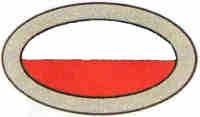

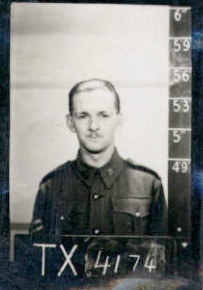

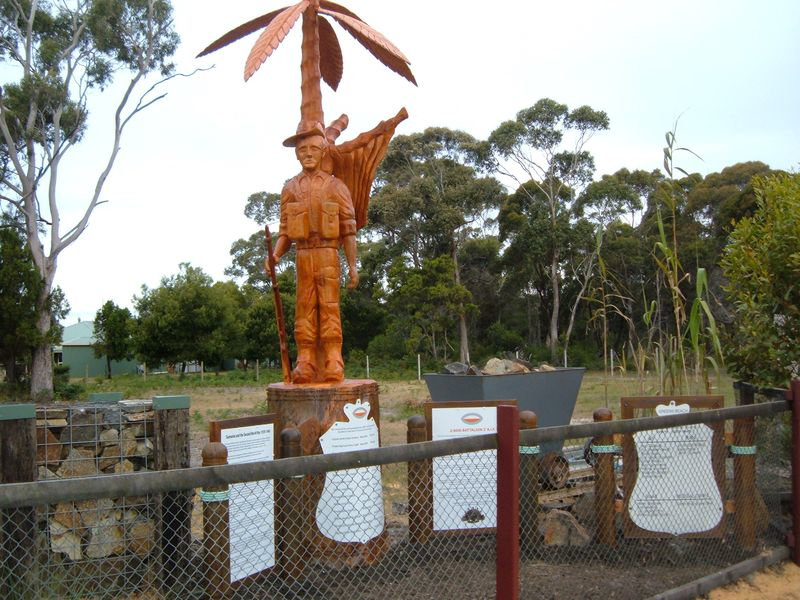

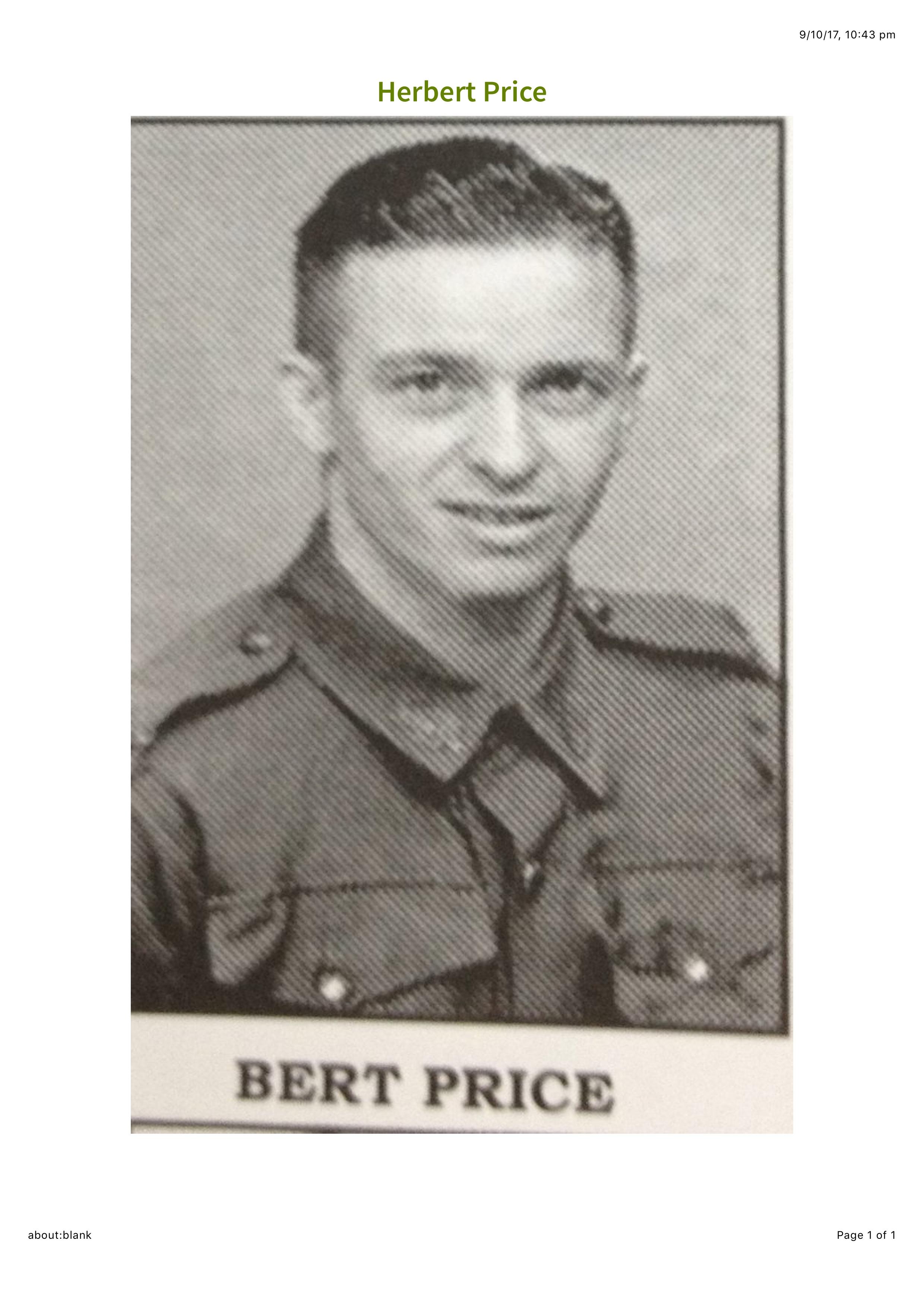





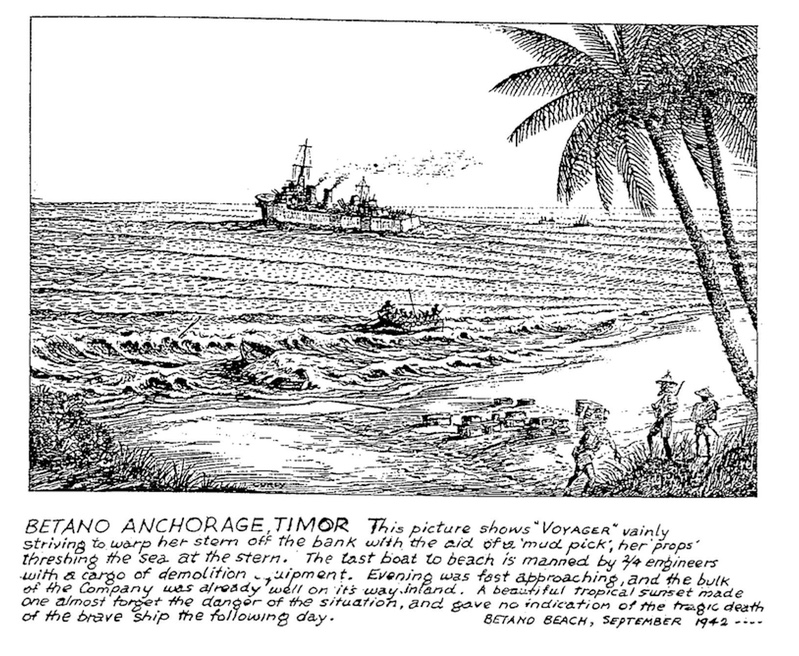




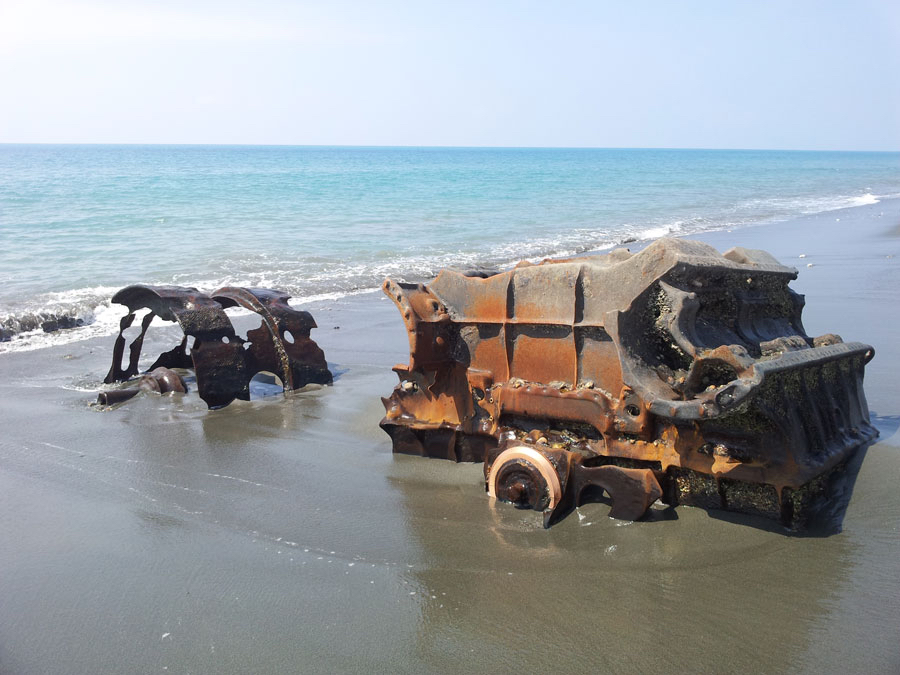





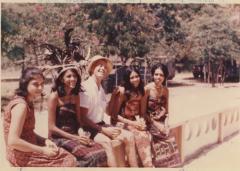
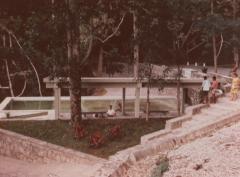
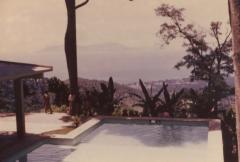
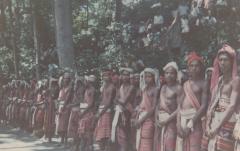

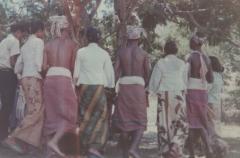
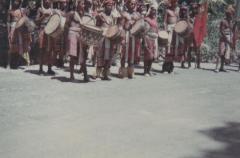
.jpg.ba0f28133a3875d9fec84a79d40e4811.jpg)
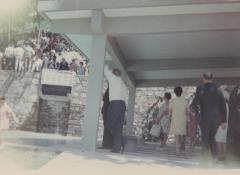
.jpg.7a1913dc9ce3d543477fe81569aba889.jpg)

.jpg.3b4f4ae2db1d83ff99ad5c3dcbd0c4d4.jpg)
